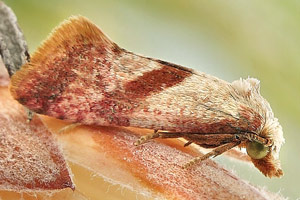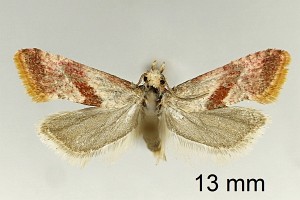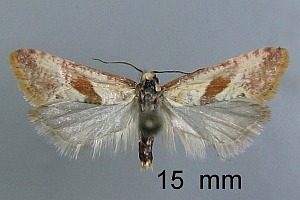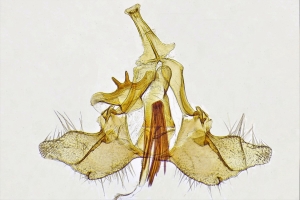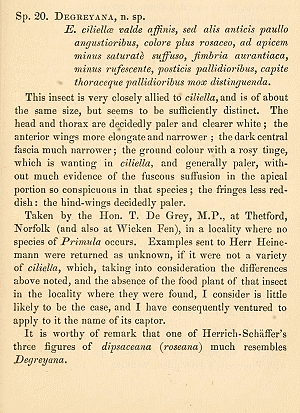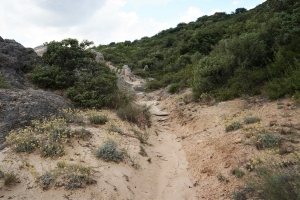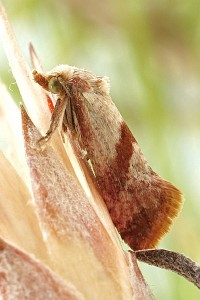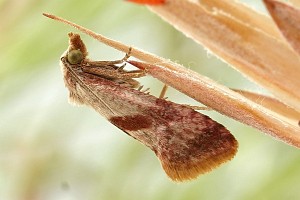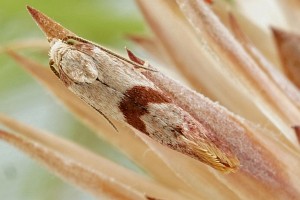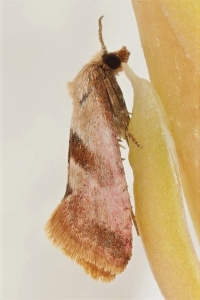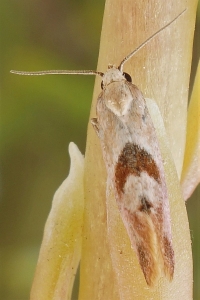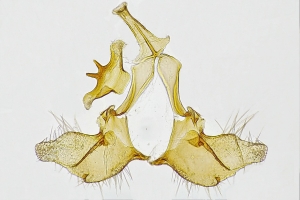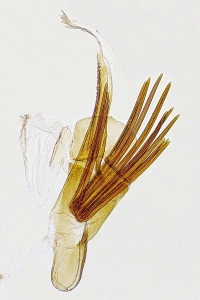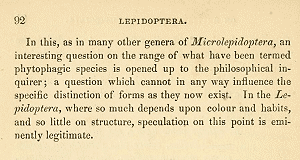

 +25Kontinente:EUAS
+25Kontinente:EUAS2. Diagnose
2.1. Männchen
2.2. Geschlecht nicht bestimmt
2.3. Genitalien
2.3.1. Männchen
2.4. Erstbeschreibung
3. Biologie
3.1. Habitat
3.2. Nahrung der Raupe
- [Plantaginaceae:] Plantago lanceolata (Spitz-Wegerich)
- [Plantaginaceae:] Linaria vulgaris (Echtes Leinkraut)
- [Plantaginaceae:] Antirrhinum sp. ? (Löwenmaul ?)
Bei Kennel (1913: 259) ist zu lesen: "Die Raupe ist blaßgelb, der Kopf braun, das Nackenschild blaßgelb mit zwei schwarzen Fleckchen am Hinterrand; sie lebt im Juni und in zweiter Generation vom August an (überwinternd?) in Blüten imd Samen von Plantago, Linaria, Antirrhinum".
Bei Razowski (2001: 45) heißt es zur Raupe ganz entsprechend: "Bl[üte], Sa[men]; Plantago (Plantaginaceae), Linaria, Antirrhinum (Scrophulariaceae)."
Eine konkrete Raupenbeschreibung findet sich z.B. bei Hancock et al. (2015: 82). Dort ist zu lesen: "Ovum. Laid on common toadflax (Linaria vulgaris) or ribwort plantain (Plantago lanceolata) in June and August. [...] first generation feeds in June on the flowers and the second generation in August and September on the seeds of the foodplant; when full-fed larvae on tadflex usually leave the plant and spin a cocoon in the earth amongst debris, those on ribwort plantain may remain in the seedhead; the second generation larvae hibernate until May."
Die erste Beschreibung der Raupe stammte von Warren (1887: 134): "Following the clue afforded by the report that a specimen of this insect was once bred by the late Rev. Mr. Bree from a larva found feeding in a flower of Linaria vulgaris, I have this year been able to find it in considerable plenty. The larva is pale yellow, active and rather large compared with the size of the imago. Head brown; [...] I am unable to state at present how the first or summer brood feeds; but from the fact that all the early flowers are aborted, I suspect that the larvae attack the young flower buds. Those collected in August and September feed within the seed-pods on the unripe seeds."
Ob es zu "Antirrhinum" eine konkrete Freiland-Beobachtung gibt, ist mir nicht klar.
(Autor: Erwin Rennwald)
4. Weitere Informationen
4.1. Andere Kombinationen
- Eupoecilia degreyana McLachlan, 1869 [Originalkombination]
4.2. Synonyme
- Cochylis amoenana var. alaiana Caradja, 1916
- Phalonia rosetincta Filipjev, 1924
4.3. Literatur
- Hancock, E.F., Bland, K.P. & J. Razowski (2015): The moths and butterflies of Great Britain and Ireland. Volume 5 (Part 1). Tortricidae, Tortricinae & Chlidanotinae. - 245 S.; Leiden & Boston (Brill).
- Kennel, J. (1908-1921): Die Palaearktischen Tortriciden. Eine monographische Darstellung. — Zoologica, 21 (54): 1-546. [PDF auf zobodat.at]
- Erstbeschreibung: McLachlan, R. (1869): On the British Species of Tortrices belonging to the Genus Euopecilia of Curtis. — The Entomologist's Annual for MDCCCLXIX: 83-93. London (John van Voorst).
- Razowski, J. (2001): Die Tortriciden (Lepidoptera, Tortricidae) Mitteleuropas. Bestimmung - Verbreitung - Flugstandort - Lebensweise der Raupen. — 319 S.; Bratislava.
- Warren, W. (1887): Description of the larva of Eupoecilia Degreyana. — The Entomologist's monthly Magazin, 24: 134. [Digitalisat auf biodiversitylibrary.org]
























